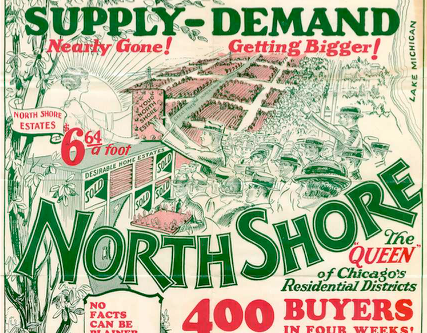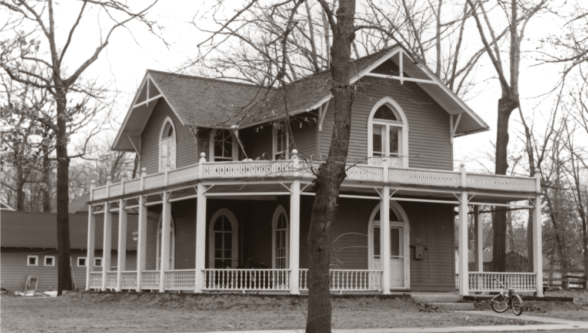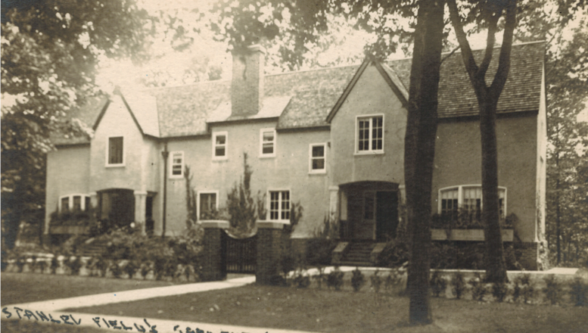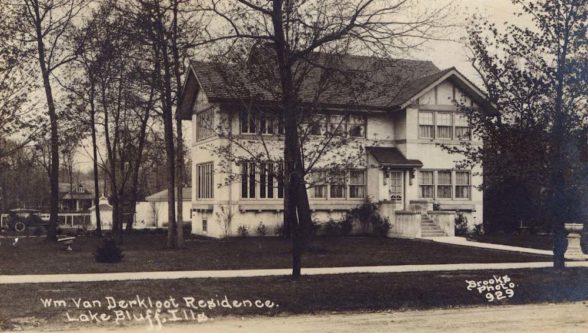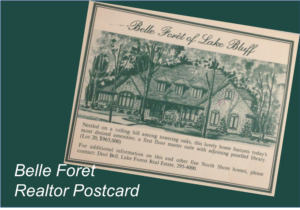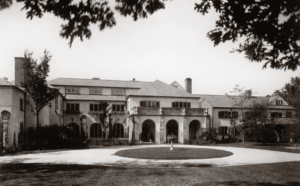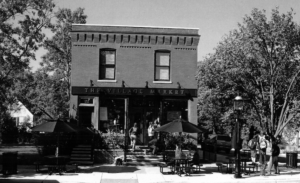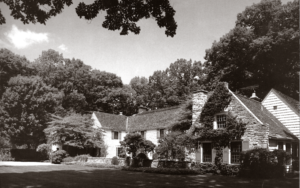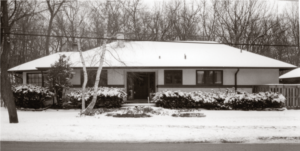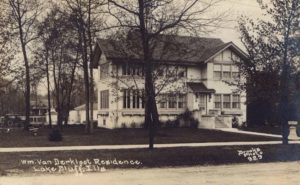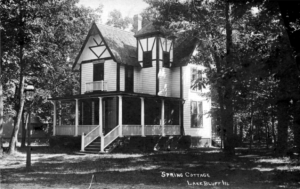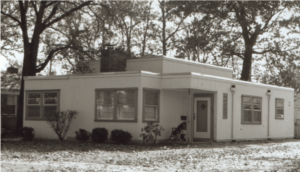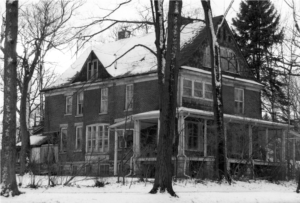The 1890s brought the formation of a community with year-round residents. When the camp meeting declined in popularity, residents voted to incorporate as a village to ensure the community’s future. The election was held September 21, 1895 and the first board meeting took place in November.
As the community grew, its commercial district expanded in its present location on Center and Scranton Avenues, a commercial area first established during the camp meeting days. Many early commercial buildings were single story frame structures. They included a bakery, grocery, ice cream parlor, post office and real estate office.
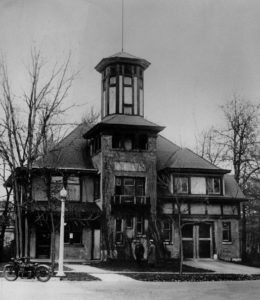 Two significant brick buildings erected at the beginning of the 20th Century established a definitive downtown for the Village. The first, in 1904, was the train station for the Chicago & Northwestern Railroad. The second was Village Hall, built in 1905. In the 1920s, brick structures housing both retail and offices were built along Center Avenue and the south side of Scranton Avenue. In the 1950s and 1960s, the north side of the street was developed for commercial use. The architectural significance of the oldest buildings in this commercial area was recognized in 2007 when they were placed on the National Register of Historic Places.
Two significant brick buildings erected at the beginning of the 20th Century established a definitive downtown for the Village. The first, in 1904, was the train station for the Chicago & Northwestern Railroad. The second was Village Hall, built in 1905. In the 1920s, brick structures housing both retail and offices were built along Center Avenue and the south side of Scranton Avenue. In the 1950s and 1960s, the north side of the street was developed for commercial use. The architectural significance of the oldest buildings in this commercial area was recognized in 2007 when they were placed on the National Register of Historic Places.
Paralleling development of the commercial district, was growth of the residential community. Cottages on the east side of town were converted to year-round residences and wealthy families built summer estates along the Green Bay Road corridor and the lake front starting in the 1910s and continuing into the 1930s. Designed by renowned architects, many are still in existence today. During this same time period, Crab Tree Farms was established and built its reputation as renowned dairy. A farm and open lands occupy much of this land today.
In 1919, Abbott Laboratories relocated to North Chicago. Abbott employees started moving into Lake Bluff in such numbers in the 1920s and 1930s that it was nicknamed “Abbottville.” In the 1920s, plans for the downtown area and a subdivision with a commercial area dubbed Market Square North were drawn up. While never brought to fruition, these plans laid the groundwork for development of the Terrace areas many years later.
Of the Terraces, North Terrace was developed first. Homes in this area were built by independent builders, including the Harlan family. In 1958, development of the East Terrace started, followed by the West Terrace in 1960 and 1961. Homes in the West Terrace were built by the Chicago Construction Company.
Plans from the 1920s included annexation of land westward to Waukegan Road. This plan was never realized. Much of the land in what is now Knollwood was farmland. In the late 1950s and 1960s, the farms began to be split up and replaced by homes. West School was opened as a neighborhood school in 1963.
From the 1960s through the 1990s, Lake Bluff grew through the development and annexation of several subdivisions, including the Bath and Tennis Club subdivision in the early 1960s, Tangley Oaks and Armour Woods in 1979-1980, the Bath and Tennis Club extension in the late 1980s, Belle Foret in the 1990s and annexation of the Sanctuary in 1998.
In the 1990s through 2008, and again more recently, Lake Bluff experienced a building boom characterized by tear downs and new construction, additions and remodels. Present day Lake Bluff is an eclectic mix of old and new homes.
